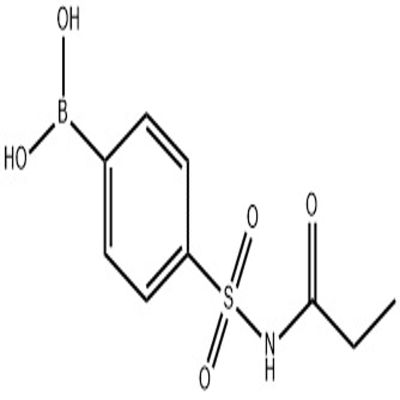-
Categories
-
Pharmaceutical Intermediates
-
Active Pharmaceutical Ingredients
-
Food Additives
- Industrial Coatings
- Agrochemicals
- Dyes and Pigments
- Surfactant
- Flavors and Fragrances
- Chemical Reagents
- Catalyst and Auxiliary
- Natural Products
- Inorganic Chemistry
-
Organic Chemistry
-
Biochemical Engineering
- Analytical Chemistry
- Cosmetic Ingredient
-
Pharmaceutical Intermediates
Promotion
ECHEMI Mall
Wholesale
Weekly Price
Exhibition
News
-
Trade Service
There is much debate about whether the climate will affect the spread of the new coronavirus (SARS-CoV-2)Although several statistics over the past few months have shown a faint correlation between climate and the spread of the neo-coronavirus, i.ethe hotr the weather, the less likely it is that the new coronavirus will spread, these are preliminary studies and the exact relationship between climate and the new coronavirus is not yet clearRecently, researchers at Princeton University in the United States used climate-based epidemiological models to simulate a new coronavirus pandemicIt was found that rising summer temperatures in the northern hemisphere were unlikely to significantly curb the spread of the new corona, and that the climate was a mitigating factor only when most people acquired new crown immunityThe study was published in the journal Science"We don't expect warmer or wetter climates to slow the spread of the virus in the early days of the pandemic," said Rachel Baker, lead author of the paper and a postdoctoral fellow at the Princeton Environmental Research Institute (PEI)We do see the impact of climate on the scale and timing of the pandemic, but in general, because of the high susceptibility of the virus to the population, the virus spreads rapidly regardless of climatic conditions"
it is understood that the new coronavirus is spreading rapidly in Brazil, Ecuador, Australia and other countries in the tropics and the southern hemisphereThis suggests that a warming environment will not prevent a pandemicThe trajectory of pandemics in the coming months will be affected by "human factors such as non-drug interventions that reduce exposure) and basic biological uncertainties (e.gthe intensity and duration of post-infection immunity)Researchers at Princeton University,, believe that a lack of group immunity (i.ehigh susceptibility) was a crucial driver of the virus's spread in the early stages of the new coronavirus pandemicTo test this, the researchers used New York's average humidity and seasonality to run simulations of different climates and population susceptibility levels They made three hypotheses based on known information about the effects of seasonal changes on the occurrence of similar viruses the first scenario assumes that the new coronavirus has the same climate sensitivity as influenza, a previous model based on laboratory studies that emphasized the importance of low humidity in promoting transmission In the second and third cases, it is assumed that the virus has the same climate dependence and immunity as two other human Class B coronaviruses (OC43 and HKU1), which are the causes of the common cold found that the spread of influenza or two class B coronaviruses showed a certain correlation with humidity The relationship between new coronavirus cases and humidity is diametrically opposed to the other two coronaviruses The greater the humidity, the stronger the transmission capacity Of course, the law summed up in a specific humidity range can not simply spread to other humidity range, let alone prove that when the humidity continues to rise, the new coronavirus is more contagious But this proves that the pattern of transmission and climate may vary from the global pandemic to the two other Class B coronaviruses, which are mainly seen in the United States, as well as past infectious diseases Based on this, the team conducted SIRS simulations of infectious disease epidemics (commonly used in infectious diseases) in nine sample cities based on appropriate climatology data The results showed that for New York, London and Delhi in the northern hemisphere, there was no substantial difference in the size of the pandemic in the three cases, although the climates were very different The same is true of cities in the southern hemisphere this conclusion coincides with a previous study published in the journal JAMA Network Open The study, led by Professor Shen Hongbing of Nanjing Medical University, revealed an outbreak of a mass infection at a public bath in Huai'an, Jiangsu Province: a patient with co-coronary pneumonia (COVID-19) came to the bath with symptoms and transmitted the virus to eight other healthy people within the next six days The results suggest that high temperatureand and high humidity may also be difficult to stop the new coronavirus invasion of the human body What's more, in the latest study, different features of pandemics in different scenarios have made the team aware of the important role that factors associated with human immunity play They believe that changes in the length of immunization determine when the epidemic is pandemic In the absence of population immunity, this factor plays a particularly important role in an infectious disease pandemic caused by a new pathogen "The stronger people's immunity, the more sensitive people are to the climate, " says Baker If the model runs long enough, there will be a pandemic and the outbreak will become a seasonal infection "
concluded that the results suggest that while climate may have an impact on the scale and timing of an infectious disease pandemic in a given region, the immunization status of populations is a more fundamental driver." next step, the researchers hope to test the model through future changes in the larger epidemic curve and detailed measurements of local climates, controls and other local variables in different climate regions In the context of a new coronavirus pandemic, tropical and temperate regions should be prepared for severe outbreaks of disease Summer temperatures do not effectively limit the spread of infection, but that doesn't mean the climate doesn't matter in the long run A more detailed understanding of climate drivers and immunity is critical to understanding the importance of control measures





![1-METHYL-4-[5-(4,4,5,5-TETRAMETHYL-1,3,2-DIOXABORALAN-2-YL)PYRIDINE-2-YL]PIPERAZINE](https://file.echemi.com/fileManage/upload/goodpicture/20210822/m20210822160345712.jpg)

